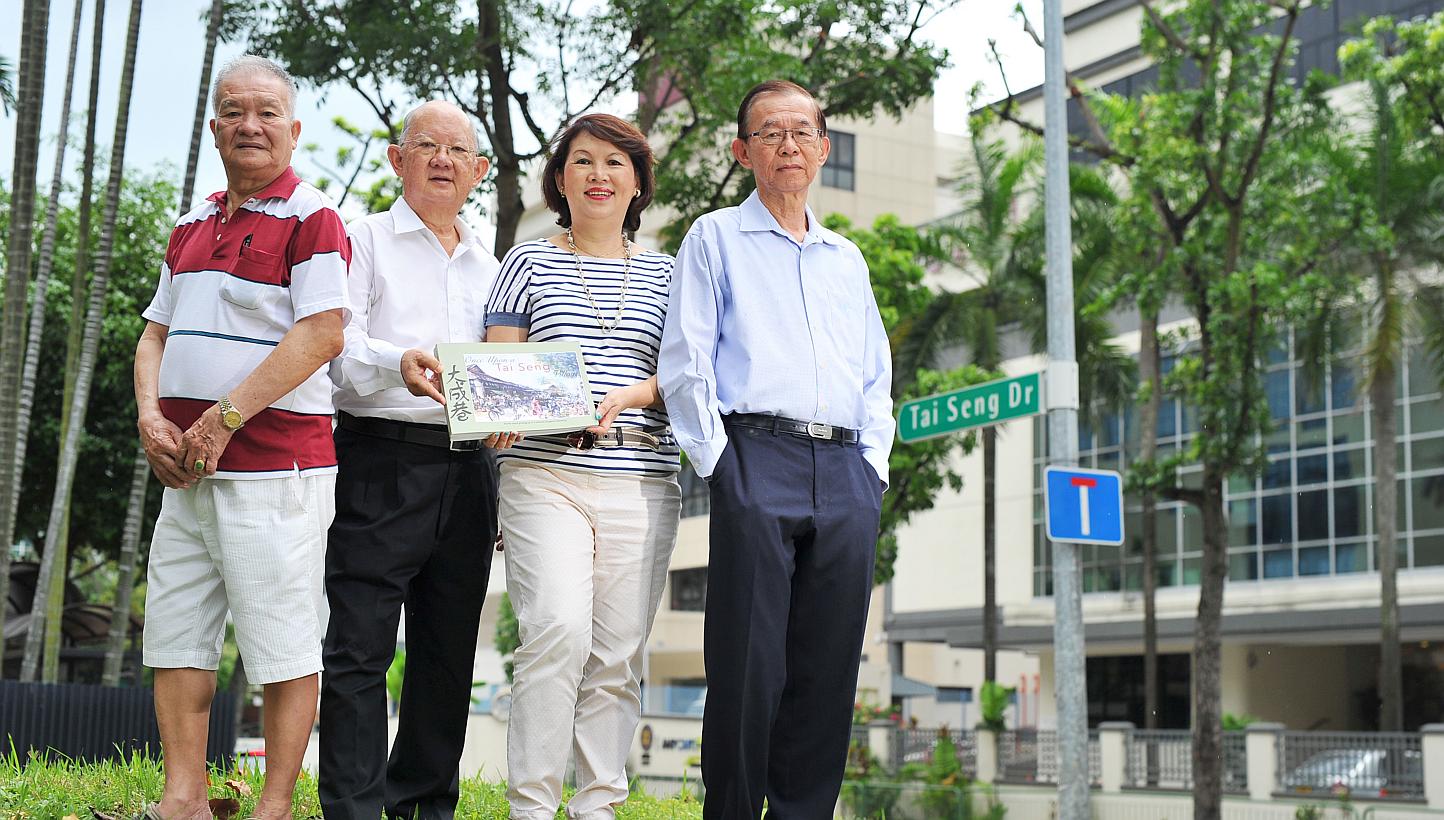Tai Seng's gang wars captured in new book
Heritage book on colourful past of industrial area to be launched today
Sign up now: Get ST's newsletters delivered to your inbox

Among the contributors to the book Once Upon A Tai Seng Village are (from left) Mr Ang Mia Chaw, 73, Mr Alec Ang, 70, Ms Ann Phua, 64 - who is also the book's co-author - and Dr Stephen Chee, 78. -- PHOTO: LIM YAOHUI FOR THE STRAITS TIMES
Follow topic:
Tai Seng may seem like a staid industrial estate today, but former residents such as Mr Ang Mia Chaw remember its kampung days, which were rife with gangs and robberies.
"It was a messy place," said the retired turtle soup hawker, 73, who was shot in the face four decades ago when he and his friends tried to stop four armed men from robbing his neighbour's home.
He still carries the scars from that gunshot wound today.
Mr Ang said in Mandarin: "Taxis refused to enter Lorong Tai Seng at night. Gangsters from other places like Geylang would come down to beat our gangsters in the streets. When we were free, we would come out to watch them. It was like the movies."
His is among the stories from Tai Seng's colourful past that have been compiled in a heritage book titled Once Upon A Tai Seng Village. It is sponsored by the Singapore Memory Project.
The book will be launched today at the head office of logistics firm DHL in Tai Seng Drive. More than 300 people, including former residents and their families, are expected to attend.
The book's co-author, Ms Ann Phua, 64, spent the past two years collecting material for the book after she realised that "even in the Google age, there is nothing to be found on Tai Seng".
The founder of a social enterprise is the granddaughter of entrepreneur Ang Yong Huat, who, in 1917, built the Tai Seng Rubber Factory - after which the area takes its name.
Dr Stephen Chee, 78, a physician, ran a clinic in the kampung for about 20 years.
He said that, one night, two gangsters escorted him, blindfolded, from his clinic and took him to a small thatched hut. There, he was forced to stitch up one of their comrades, who had been sliced so badly along the scalp that the bone was visible.
Besides its criminal elements, Tai Seng was known for its bustling marketplace and outdoor cinema.
The kampung died a slow death, however, when government resettlement initiatives saw its once-15,000-strong population move out between 1977 and 1999.
The area later became industrialised, and is now home to the headquarters of brands such as BreadTalk, Charles & Keith and DHL.
All that is left of the old Tai Seng kampung today is the Hong San Templein Defu Lane, and the memories of its former residents, now scattered across Singapore.
oliviaho@sph.com.sg

